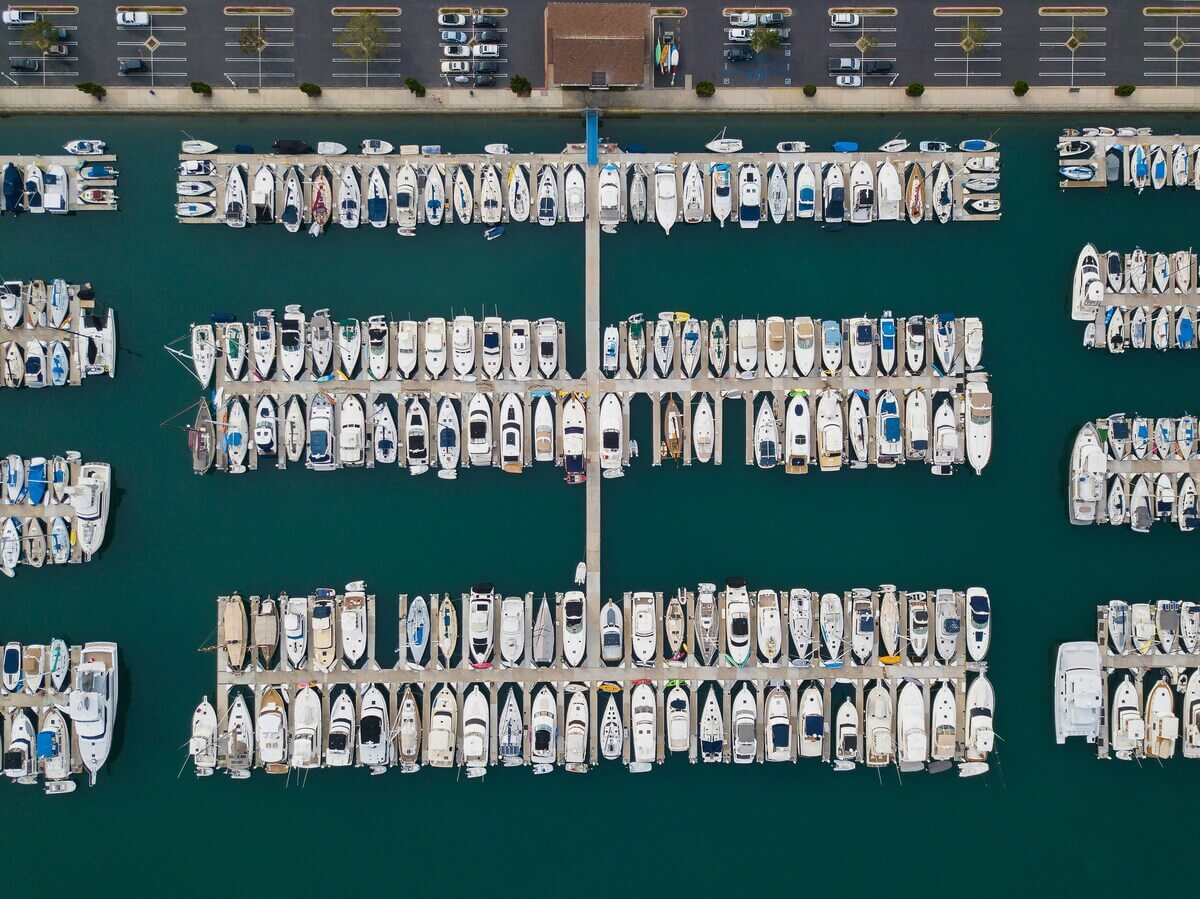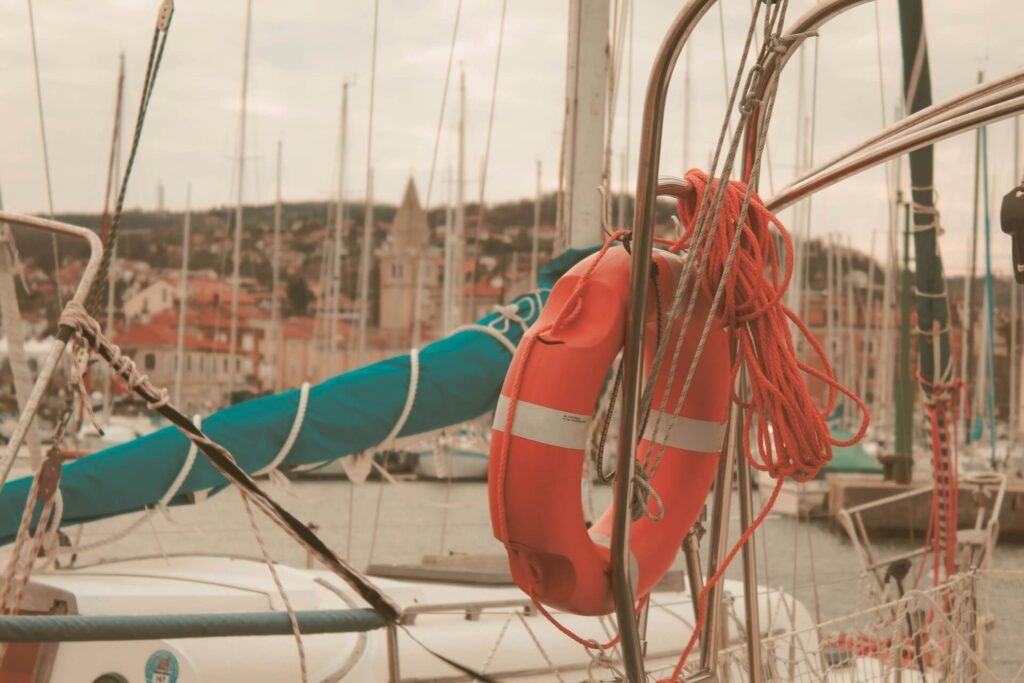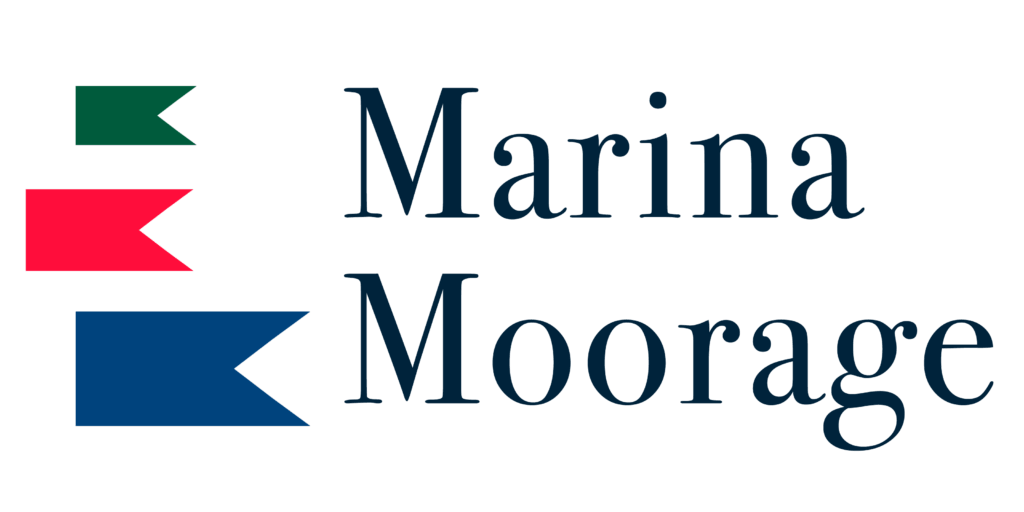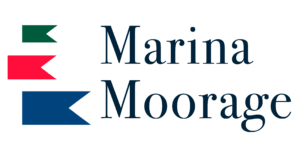Safety-First Marina Operator Marketing: A 2025 Playbook for Reliable Seasonal Boat Moorage

Long before a firm handshake or a signed contract, your tenants can already tell whether tonight’s tie-up will feel effortless or uneasy. That key impression doesn’t come from a glossy…
Long before a firm handshake or a signed contract, your tenants can already tell whether tonight’s tie-up will feel effortless or uneasy.
That key impression doesn’t come from a glossy brochure. It comes from the quiet competence of safety protocols well executed — bollards tightened, dock lights checked, and slip edges cleared of last week’s spring algae. Especially in Washington and the broader Pacific Northwest, where year-round use and fast weather swings are the norm, safety doubles as both reassurance and reputation. Basic seasonal boating safety has become table stakes for transient and long-term tenants alike.
Your signage, infrastructure, and staff readiness should reflect that.
While implementing marina safety can feel overwhelming, with a concise, checklist-friendly framework, you can layer safety upgrades neatly into your existing process.
Want to keep auditors satisfied, protect occupancy margins, and signal to both returning tenants and prospective boaters that your operation runs tight?
Here’s your playbook.
Dock Infrastructure Upgrades: Small Fixes That Anchor Big Trust
Let’s set the scene: A cruiser’s easing into your marina at 2100 hours.
The mid-line snags a splintered piling.
The dock light flickers overhead.
A hose coils across the walking path, caked grime suggesting it’s been there since May.
That 30-second arrival scene determines whether that potential tenant books for the full month — or gets out of there, finds another slip, and texts the group chat that your marina “looked sketchy.”
Avoiding that outcome requires just a little proactive maintenance. Grab your calendar:
Here’s Your Quarterly Structural Walk-Through
- Torque-test cleats, ladders, and fender boards, then log your findings in a shared drive or maintenance platform
- Replace cracked planks and warped finger joints before they bloom into trip hazards
- Scrub algae slicks during low-tide minus and apply non-skid at high-traffic transitions (e.g., foot-of-ramp, utility hatches)
- Verify every LED dock light is waterproof-rated, mounted cleanly, and angled downward to aid navigation without creating glare or light pollution
- Inspect flotation tubs under fingers and older T-heads for seepage, UV brittleness, or cold-season expansion cracks
Marinas with tight dock infrastructure — especially those aiming to increase moorage occupancy without spending on ad campaigns — tend to perform best in word-of-mouth cycles.
Here’s why: The couple cruising up from Astoria this weekend will snap and share dock photos long before they leave you a formal review. Those impressions will travel fast.
Weather-Ready Protocols for Seasonal Boat Moorage in an Unpredictable Climate
Over the last five years, NOAA has issued a steady uptick in small craft advisories and coastal hazard bulletins across nearly every U.S. shoreline, with unseasonal wind events and king tide surges increasing even in historically mild shoulder months. These patterns aren’t “freak events” anymore — they’re part of the new operational normal.
Unfortunately, you can’t control the barometer.
But you can control your protocol, communication, and clarity when the pressure drops.
Weather-Readiness Moves You Can Easily Use Starting Today
- Consider weather-based, color-coded tie-off tags. You might take a cue from facilities that use green flags or tags for general dockage, yellow for storm-readiness, and red to flag critical tie-off zones during high-wind events. One glance at the piling, and you know everything you need to know.
- Invest in laminated prep checklists. Place one dockside, one in the pump-out cabinet, and one inside the electrical panel door to make it more likely that the right actions happen fast, even if the dockmaster’s out sick that day.
- Get message templates ready to go. Mass-notification templates should include a backup phone line and direct staff contact — not just a generic inbox. Templates cut your draft time during surge alerts and help renters feel looped in and safe.
If the boaters on C Dock are texting each other before they hear from your team, you’ve already lost control of the narrative. Time to tighten the loop!
Fuel-Dock Discipline—The Marina Safety Step You Can’t Afford to Ignore
It’s easy to assume your fuel system is squared away.
But most fuel dock incidents don’t come from infrastructure failure; they come from procedural blind spots, usually at the worst possible moment, like during…
…Fourth of July turnover
…A greenhorn dockhand filling in
…A boater new to their own tank
Here’s Murphy’s Law in action: You’re tightening a piling collar mid-channel when a summer hire begins fueling a 32’ cruiser. He can’t find the shutoff. She’s never used a vent loop. No spill kit. No signage.
That’s an instant liability event (and just a very bad day, all around). Training your team to anticipate user error — from venting issues to radio silence — aligns with general boat safety practices. It’s a simple way to reduce risk and build renter trust, without requiring expensive overhauls or outside consultants.
What Every Fueling Area Should Have, Without Exception
- Spill kits: Visible, waterproof-marked, and fully stocked — not zip-tied shut behind a broom closet door.
- Clear shutoff signage: Block lettering (4” minimum), not the faded Sharpie left over from 2017.
- Quarterly drills: Nothing elaborate. Just one run-through per season where staff walk through what to do, who to call, and where to stand during a spill.
Want to avoid becoming a cautionary tale in the next port safety seminar?
Invest two hours per quarter in fuel protocol refreshers. They pay dividends in both compliance and confidence.
Signage, Alerts, Marina Slip Listings, and Your Unified Emergency Plan
If a boater ties up at 8:40 p.m. on a Sunday and something goes wrong… do they know what to do?
Would they know:
- Who to call if they smell propane?
- Which pedestals are offline?
- Where to grab a fire extinguisher without running 200 feet up the dock?
If the answer to any of these is anything less than “yes, and immediately,” that’s a potential catastrophe. People could get hurt, and you could get a citation. It’s time to make sure that your emergency plan is primed and ready to go, with specific resources and ultra-accessible action items.
Post These, Review Them Quarterly, and Sleep Easier Year-Round
Your posted emergency plan should include the following:
- Emergency contact (with area code): Not just “call the office.” Include a 24/7 option, even if it routes to the on-call dockmaster.
- Pump-out and fuel hours: Especially important during shoulder season or low staffing.
- Ladder and fire extinguisher locations: Label them on dock maps and in physical space — laminated signs with arrows help, especially after dark.
- Storm prep basics: A printed one-sheet in each slip packet (or posted at every third finger) goes a long way in giving transient tenants guidance without crowding your inbox.

And don’t forget: Safety visibility isn’t just a dockside matter.
In your digital listings and inquiry replies, flag relevant details like: “Pump-out available Fri–Sun. Extended dock lighting installed fall 2024. Tie-off zones clearly marked for spring storms.”
Further, encouraging boaters to schedule Vessel Safety Checks through the Coast Guard Auxiliary can reduce inspection risk for you — and shows tenants and inspectors alike that your marina values preparedness and alignment with national safety protocols.
These cues help attract detail-oriented renters — the kind who double-check nav apps and pay on time. The more of them you land, the fewer midnight surprises you’ll field.
Turning Safety Wins Into Marina Marketing That Fills Slips
Most operators treat marina safety as an admittedly annoying compliance box to check and forget.
The smart ones treat it as their competitive advantage.
Because when a dock feels clean, calm, and cared for — even at peak traffic — boaters notice. And, importantly, they tell other boaters.
That’s how you end up with the yacht broker who sends clients your way specifically because your fire lanes are clearly marked. Or the charter captain who books early after spotting spill-prevention signage in your listing photos. Or the liveaboard tenant who re-ups for winter before the frost advisory hits — because she trusts your storm plan will hit her inbox before the weather does.
Digital tools help you amplify that work without adding extra weight. They make it easy to update renters in real time when conditions shift, to post critical info inside listings, and to funnel questions straight to your team — not into a voicemail void.
At the end of the day, the marina that communicates clearly, prepares proactively, and takes safety seriously?
That’s the marina that keeps its slips full — season after season.
Put Your Safety Standards Front and Center to Boost Marina Slip Listings and Occupancy
All the dock walks, spill drills, and storm briefings in the world won’t land in a boater’s inbox unless you have a clean, direct way to share them. That’s why many Washington operators slip their safety notes straight into their marina slip listings on Marina Moorage.
With a few clicks you can:
- Add tie-off diagrams, ladder locations, or fuel-dock hours right inside our commission-free slip listing platform
- Push real-time alerts — from king-tide prep to pump-out maintenance — without a phone-tree scramble
- Keep every inquiry in your inbox (no middle-man portals, no commissions siphoning the margin you’ve protected)
When a cruiser sees that level of transparency before they cast off, booking the slip becomes the easy part.
Safety does the selling. Visibility closes the loop.
Ready to turn “well-run” into “fully booked”? List your slips on Marina Moorage today and keep control of every detail — from safety updates to seasonal rates.
Serious About Improving Your Marina’s Performance?
We’ve helped docks across the West Coast grow revenue and stay full. Find out how with expert guidance from our Marina Consultants.



